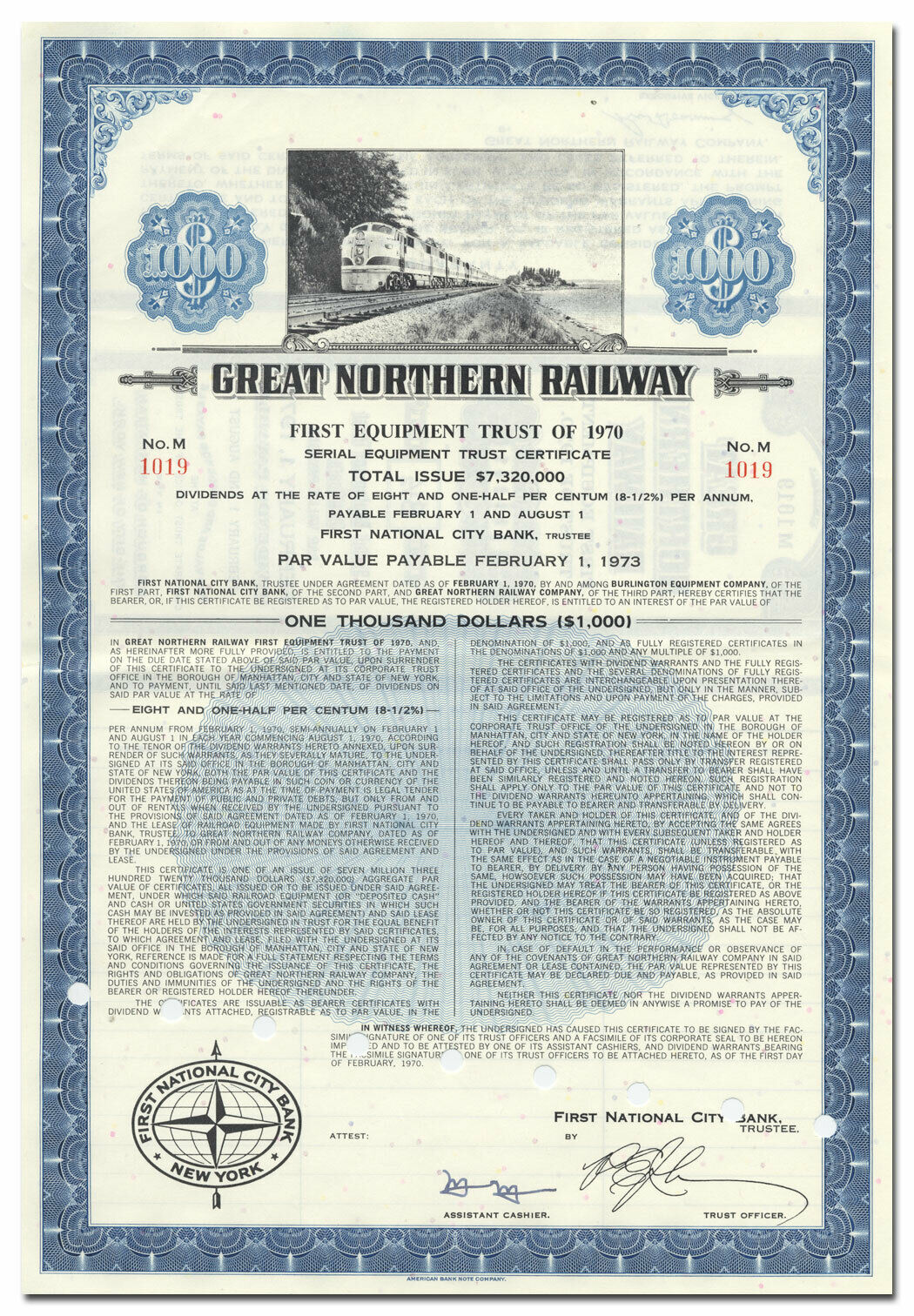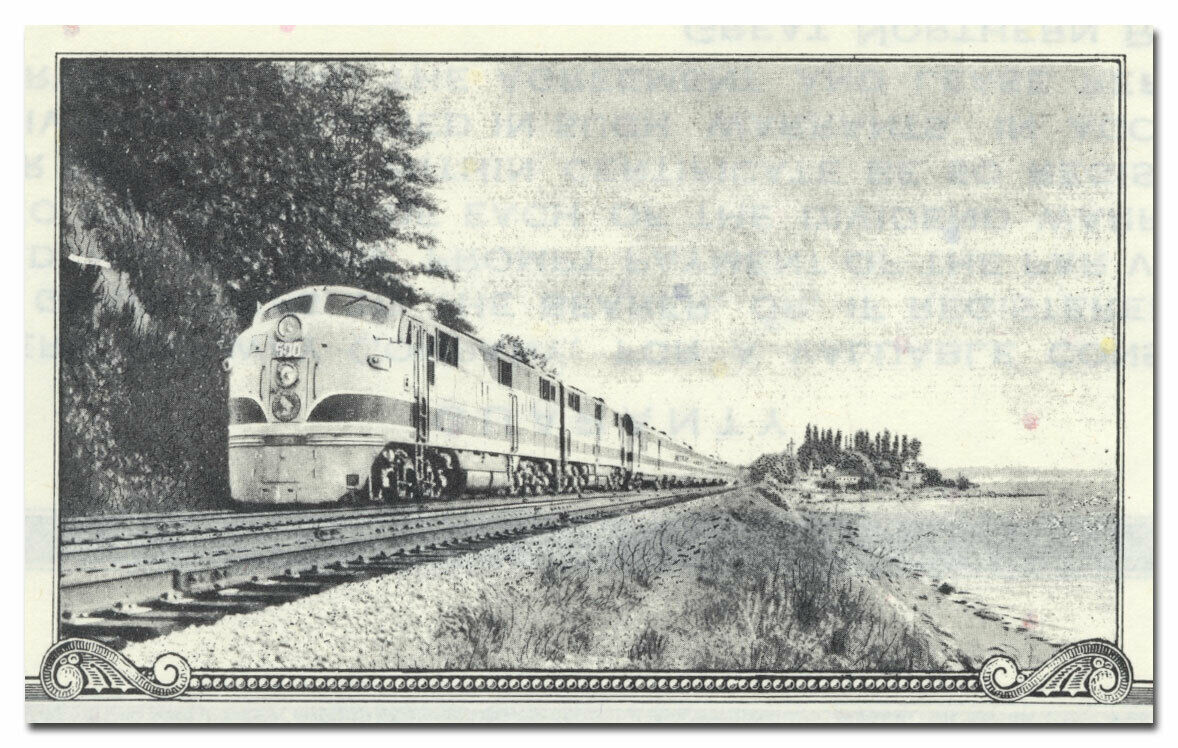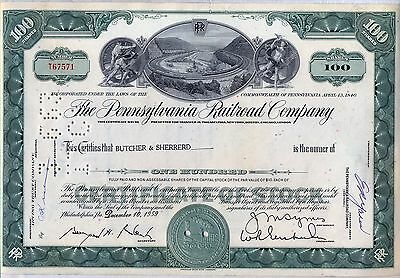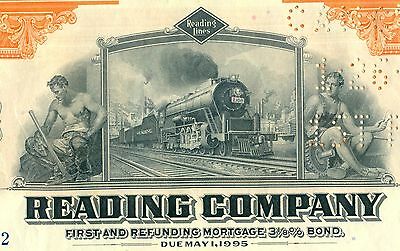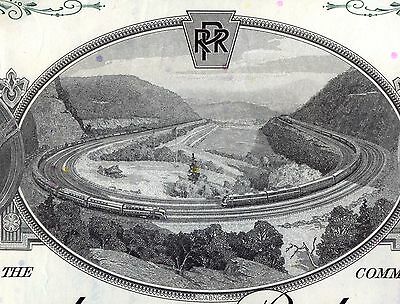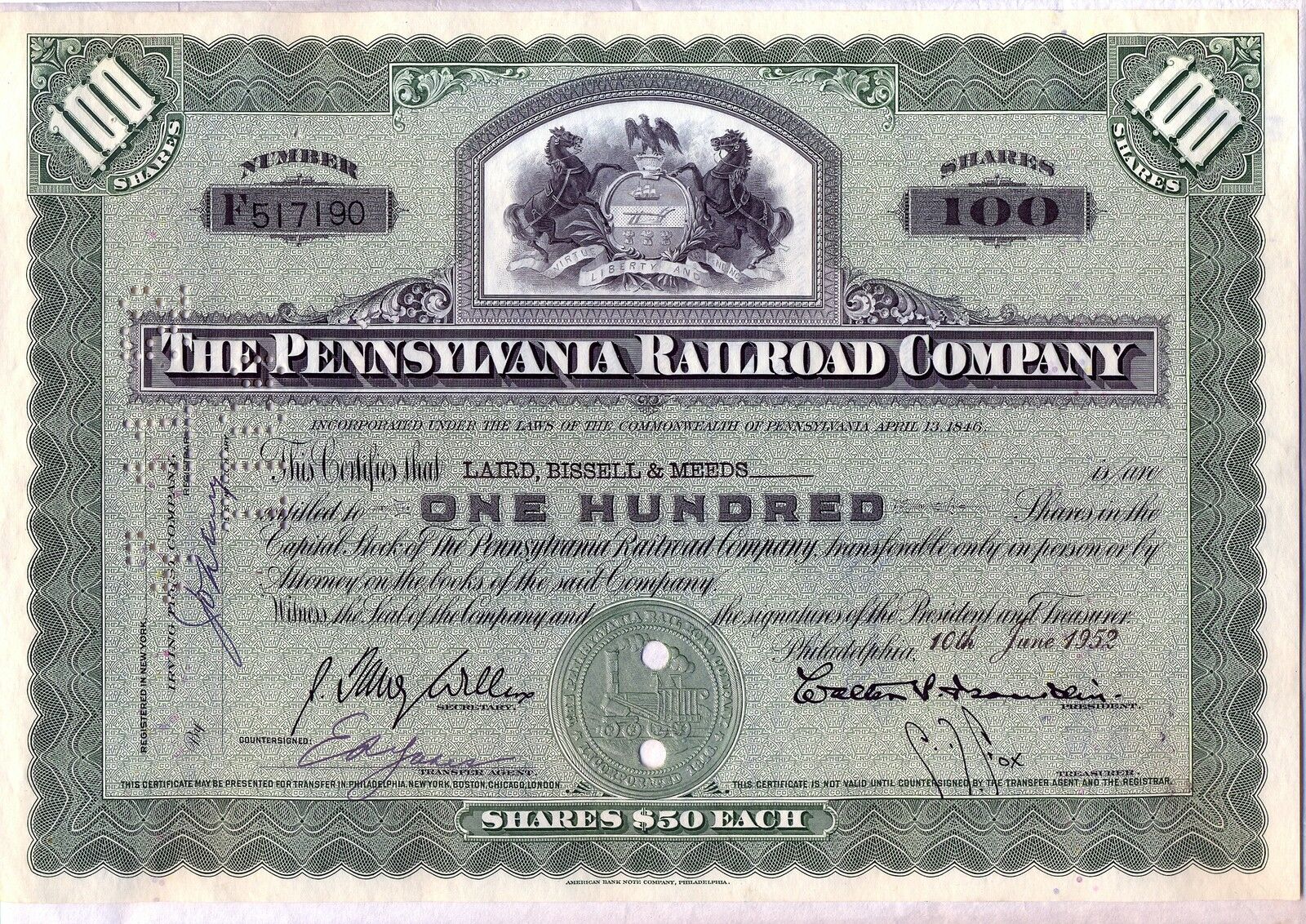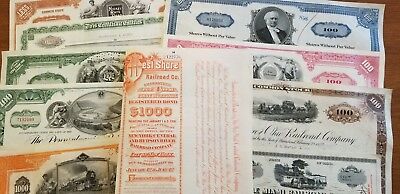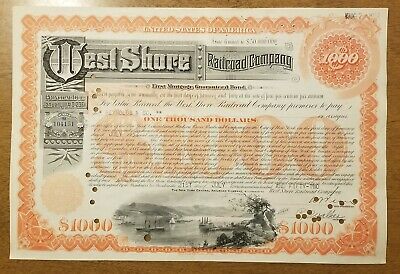-40%
Great Northern Railway Company Equipment Trust Certificate
$ 4.75
- Description
- Size Guide
Description
Product DetailsNicely engraved antique bond certificate from the Great Northern Railway Company dating back to the 1960's and 1970's. This document, which carries the printed signatures of the Trust Officer and Assistant Cashier, was printed by the American Bank Note Company and measures approximately 9 1/4" (w) by 13 1/2" (h).
This certificate features a vignette of Great Northern diesel locomotive pulling a train along a lake or river.
Images
You will receive the exact certificate pictured.
Historical Context
The Great Northern Railway, running from St. Paul, Minnesota to Seattle, Washington — more than 1,700 miles — was the creation of the 19th century railroad tycoon James J. Hill and was developed from the St. Paul and Pacific Railroad. The Great Northern's route was the most northern transcontinental railroad route in the United States and was north of the Northern Pacific Railway route. The Great Northern was a privately funded transcontinental railroad, though some of its predecessor roads received land grants. The Great Northern was one of the few transcontinental railroads to avoid receivership following the Panic of 1893.
The Great Northern was built slowly to create profitable lines before extending the road further into undeveloped territory. Contests were held to promote interest in the railroad. James J. Hill used early promotional incentives like feed and seed donations to farmers getting started along the line. Contests were all-inclusive, from largest farm animals to largest freight carload capacity.
The Great Northern had branches that ran north to the Canadian border in Minnesota, North Dakota and Montana. It also had branches that ran to Superior, Wisconsin and Butte, Montana. The Great Northern eventually grew to a system of over 8,000 track miles.
The mainline crossed the Mississippi River on the Stone Arch Bridge in Minneapolis, near the Saint Anthony Falls, the only waterfall on the Mississippi. The bridge ceased to be used as a railroad bridge in 1978 and is now used as a pedestrian river crossing with excellent views of the falls and of the lock system used to grant barges access up the river past the falls. The mainline reached Seattle, Washington in 1893.
In 1931 the GN also developed the "Inside Gateway," a route to California that rivaled Southern Pacific's route between Oregon and California. The GN route was further east than the SP route and ran south from the Columbia River in Oregon. The GN connected with the Western Pacific at Bieber, California; the Western Pacific connected with the Atchison, Topeka, and Santa Fe in Stockton, California and together the three railroads (GN, WP, and ATSF) competed with Southern Pacific for traffic between California the Pacific Northwest. With a terminus at Superior, Wisconsin, the Great Northern was able to provide transportation from the Pacific to the Atlantic by taking advantage of the shorter distance to Duluth from the ocean, as compared to Chicago.
In 1970 the Great Northern, together with the Northern Pacific, the Chicago, Burlington and Quincy Railroad and the Spokane, Portland and Seattle Railway merged to form the Burlington Northern Railroad, today part of the BNSF Railway.
The Great Northern operated various passenger trains but the Empire Builder was the GN's premier passenger train. The Empire Builder was named in honor of Great Northern's founder James J. Hill, who was known as the "Empire Builder."
